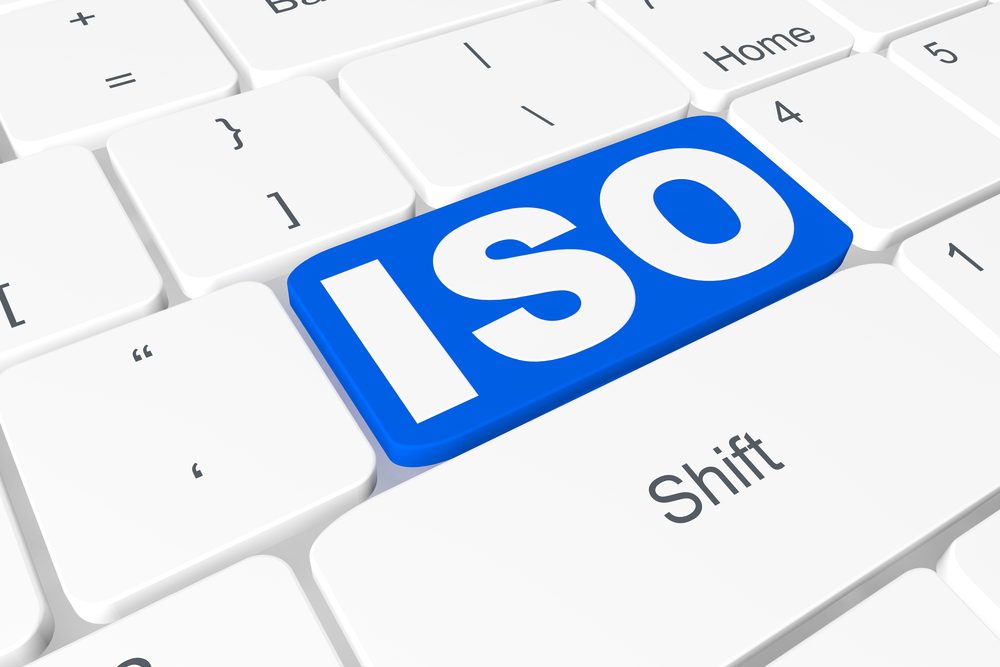Simplify Compliance with Integrated Management Systems for ISO 45001, 14001, and 9001
Integrated Management Systems (IMS) have become a popular choice for organizations seeking to streamline their management processes and achieve compliance with multiple international standards.
The IMS approach involves integrating various management systems, such as ISO 45001, ISO 14001, and ISO 9001, into a single cohesive system that improves efficiency and reduces duplication of effort.
The benefits of implementing an IMS include improved risk management, increased operational efficiency, enhanced communication, and greater stakeholder satisfaction.
Organizations can also achieve significant cost savings by reducing the number of audits required to comply with different standards.
In this article, we will explore the key features of an IMS and how it can help organizations comply with ISO 45001, ISO 14001, and ISO 9001 while improving overall business performance.
Understanding The Need For Integrated Management Systems
Integrating the management systems of ISO 45001, ISO 14001 and ISO 9001 offers many benefits, such as improved operational efficiency, increased customer satisfaction and better employee well-being.
However, integrating multiple management systems can be challenging, as it requires a significant amount of time, resources and coordination of different processes and teams.
Additionally, organizations must ensure that the integrated management system is compliant with the relevant standards and that all stakeholders are adequately trained.
Therefore, integrated management systems are a powerful tool when implemented in an effective and efficient manner.
Benefits Of Integration
Integrated Management Systems (IMS) have become increasingly popular among organizations seeking to streamline their processes and improve overall performance. By integrating ISO 45001, ISO 14001, and ISO 9001 standards, companies can benefit from improved efficiency, reduced costs, and increased customer satisfaction.
One of the key benefits of IMS is the elimination of redundant processes and documentation. Instead of maintaining separate systems for each standard, an integrated approach allows organizations to centralize their management system, reducing duplication of efforts and minimizing errors.
Another benefit of IMS is the ability to identify opportunities for improvement more easily. By having a comprehensive view of operations across all standards, organizations can identify areas where improvements can be made that will positively impact multiple aspects of the business. For example, an environmental improvement may also result in improved safety or enhanced customer satisfaction.
Additionally, an integrated approach makes it easier to monitor compliance with regulatory requirements across all relevant standards, which helps mitigate risk associated with non-compliance.
In conclusion, implementing an Integrated Management System has numerous benefits, including increased efficiency, reduced costs, improved customer satisfaction and a better understanding of organizational performance. The integration of ISO 45001, ISO 14001 and ISO 9001 standards provides a comprehensive framework for managing quality, environmental concerns and occupational health & safety risks within a single system.
Organizations that adopt this approach will not only meet international standards but are also well-positioned to achieve long-term success in today’s competitive business landscape.
Integration Challenges
Despite the numerous benefits of implementing an Integrated Management System (IMS), organizations may face various integration challenges.
One of the primary challenges is the differing requirements and objectives of ISO 45001, ISO 14001, and ISO 9001 standards. Each standard has its unique focus, such as occupational health & safety risks for ISO 45001, environmental concerns for ISO 14001, and quality management for ISO 9001. Integrating these standards requires a thorough understanding of their requirements and how they can be aligned to achieve organizational objectives.
Another challenge is ensuring that all stakeholders are on board with the IMS implementation process. This includes employees, management, customers, suppliers, and regulatory bodies. It is crucial to communicate effectively with stakeholders to gain their support and participation in the integration process.
Additionally, training and education programs should be provided to ensure that everyone involved understands their roles and responsibilities in maintaining the IMS. By addressing these integration challenges through proper planning and execution, organizations can reap the benefits of an integrated approach to management systems.
Exploring The Benefits Of Ims
An IMS, or Integrated Management System, is a combination of ISO 45001, ISO 14001 and ISO 9001 standards.
It offers significant benefits in terms of streamlining processes and cost savings.
Organizations can realize smoother and faster operations as well as improved efficiency with fewer resources used.
Overall, an IMS can improve the company’s bottom line and reduce its environmental impact.
Streamlining Processes
The integration of ISO 45001, ISO 14001, and ISO 9001 into an integrated management system (IMS) provides numerous benefits for organizations. One of these benefits revolves around streamlining processes. By implementing IMS, companies can create a cohesive structure that aligns all activities within the organization.
This results in improved communication and coordination between different departments of the company, leading to enhanced efficiency and productivity. The integration of ISO standards in the IMS also helps to reduce the duplication of resources while eliminating inconsistencies in procedures.
With IMS, companies can develop a single set of policies, objectives, and procedures that meet the requirements of each standard. This not only saves time but also ensures compliance with all three ISO standards simultaneously. Furthermore, companies can align their business goals with their environmental and occupational health and safety objectives through IMS’s streamlined process approach.
Overall, streamlining processes is a significant advantage for organizations that opt for an integrated management system incorporating iso 45001, iso 14001, and iso 9001.
Cost Savings
In addition to streamlining processes, another benefit of implementing an integrated management system (IMS) that incorporates ISO 45001, ISO 14001, and ISO 9001 is cost savings. By having a unified system, organizations can eliminate redundancies in their processes and reduce waste. This is achieved through the implementation of a continuous improvement process that seeks to identify areas where resources are being wasted and implement corrective actions.

Moreover, with IMS’s streamlined approach, companies can reduce the costs associated with maintaining separate management systems for each standard. Furthermore, the implementation of IMS helps organizations optimize their resource allocation by identifying areas where resources are underutilized. This results in reduced costs while improving efficiency and productivity.
An example of this is the use of shared resources, such as training programs or equipment, across different departments within an organization. By sharing these resources, companies can save on costs while ensuring that employees have access to the necessary training and equipment to carry out their tasks effectively. Overall, cost saving is a significant advantage for organizations that embrace IMS incorporating ISO 45001‘, ISO 14001′, and ISO 9001‘.
Streamlining Business Processes With Ims
Integrated Management Systems, also known as IMS, are becoming increasingly popular among businesses looking to streamline their operations.
This system combines the requirements of ISO 45001, ISO 14001, and ISO 9001 into a single, integrated approach.
The implementation of an IMS provides companies with a holistic view of their processes and enables them to identify areas for improvement.
One of the main benefits of implementing an IMS is that it simplifies the management of multiple systems.
With an integrated approach, companies can reduce duplication and overlap between different systems, saving time and resources.
Additionally, by consolidating all management systems into one framework, organizations can improve communication across departments and ensure everyone is working towards the same goals.
Streamlining business processes through an IMS also helps companies achieve compliance with ISO standards more efficiently.
In conclusion, implementing an Integrated Management System provides businesses with numerous benefits, including streamlined processes and improved compliance with ISO standards.
By adopting this approach, organizations can simplify their management systems while improving communication and collaboration between departments.
An IMS is a valuable tool for any business looking to optimize its performance while reducing costs and increasing efficiency.
Reducing Duplication Of Efforts
- Streamlining processes is essential in order to reduce duplication of efforts in integrated management systems.
- Automating documentation can be beneficial in reducing the time and resources that would be used to complete multiple tasks.
- Improved communication is necessary for the successful implementation of integrated management systems in order to ensure that all stakeholders are aware of their respective roles and responsibilities.
- The use of technology can assist in streamlining processes, automating documentation and improving communication.
- Management systems need to be regularly updated to ensure compliance with ISO 45001, ISO 14001 and ISO 9001 requirements.
- Developing an integrated management system that combines the requirements of all three standards will help reduce duplication of efforts and improve efficiency.
Streamlining Processes
To achieve a highly effective integrated management system, streamlining processes is essential. This means eliminating any duplication of efforts in the implementation and documentation of iso 45001, iso 14001, and iso 9001.
By doing so, organizations can ensure that their workforce focuses on their core competencies while minimizing the time required to manage different management systems. The integration of these standards allows for an efficient and more manageable approach to compliance.
Organizations can use a single framework to address quality, health and safety, and environmental concerns within their operations. This not only saves time but also reduces the risk of errors and inconsistencies in the handling of documents.
Additionally, streamlining processes promotes better communication among different departments and improves overall productivity by enabling swift decision-making based on real-time data. By adopting a streamlined approach to integrated management systems, organizations can achieve significant cost savings while delivering high-quality products or services that meet customer expectations.
Automating Documentation
To further reduce duplication of efforts in the implementation and documentation of ISO 45001, ISO 14001, and ISO 9001, organizations can consider automating their documentation processes.
Automating documentation involves using software or digital tools to generate, manage, and store documents electronically. This eliminates the need for manual entry or processing of information, reducing the risk of errors and inconsistencies.
Automating documentation also allows for better tracking and monitoring of compliance requirements across different integrated management systems. This ensures that organizations meet regulatory standards and maintain their ISO 45001 certification, ISO 14001 certification, and ISO 9001 certification.
Moreover, automating documentation promotes transparency by providing real-time access to data for all stakeholders involved in the integrated management systems. By adopting this approach, organizations can improve their overall efficiency while ensuring consistency in their operations.
Improving Communication
To further enhance the effectiveness of integrated management systems, organizations should also focus on improving communication among different departments and stakeholders.
Communication is a critical aspect of any organization’s success, and in the context of ISO 45001, ISO 14001, and ISO 9001, effective communication can help reduce duplication of efforts and promote consistency in operations.
Improving communication involves creating a culture where all stakeholders have access to information and are encouraged to share their ideas and feedback.
This can be achieved through regular meetings, training sessions, newsletters, and other communication channels.
By promoting open dialogue and collaboration across different departments involved in the implementation of integrated management systems, organizations can ensure that everyone is working towards the same goals while reducing the risk of errors or inconsistencies.
Improving Overall Performance
As we explored in the previous section, reducing duplication of efforts is a crucial step towards achieving an efficient integrated management system. However, this is just the beginning of the journey towards improving overall performance. To truly achieve success, organizations must take a holistic approach and focus on enhancing all aspects of their integrated management system.
To achieve this goal, organizations can consider implementing the following four strategies:
- Establishing clear objectives: Organizations should define their goals and objectives for each aspect of their integrated management system. This will enable them to measure their progress and identify areas for improvement.
- Engaging employees: Employees are key stakeholders in any organization’s success. Engaging them in the process of developing and implementing an integrated management system can lead to better buy-in, improved morale, and increased productivity.
- Regularly reviewing and updating policies: Policies should be reviewed regularly to ensure that they remain relevant and effective in achieving organizational goals.
- Continuously monitoring performance: Organizations should monitor their performance against established objectives to identify areas for improvement and make necessary adjustments.
By incorporating these strategies into their integrated management systems, organizations can improve their overall performance while complying with ISO 45001, ISO 14001, and ISO 9001 standards.
Unifying Existing Management Systems
Integrating ISO 45001, 14001 and 9001 into a single unified management system is a complex process.
It requires a thorough review of existing organisational policies and procedures to ensure that they fit within the framework of the three ISO standards.
Streamlining policies and procedures to fit within the new framework will help organisations to simplify their management systems, reduce costs and remain compliant with international standards.
By following a systematic approach and working with experienced ISO consultants, organisations can ensure that their unified management system meets the requirements of ISO 45001, 14001 and 9001.
Fitting Iso 45001
The implementation of integrated management systems has become a priority for companies seeking to streamline their operations, enhance efficiency and reduce costs. The adoption of ISO 45001, ISO 14001 and ISO 9001 standards has been instrumental in this process.
Of these standards, fitting ISO 45001 is particularly important as it provides a framework for managing occupational health and safety risks in the workplace. ISO 45001 is designed to help organizations prevent work-related injuries and illnesses by providing a systematic approach to managing health and safety risks.
As such, it complements existing management systems such as ISO 14001 (Environmental Management) and ISO 9001 (Quality Management). Fitting ISO 45001 into an integrated management system enhances the effectiveness of other systems by ensuring that health and safety considerations are integrated throughout all operations.
This leads to greater operational efficiency, improved risk management and increased employee satisfaction. By adopting an integrated approach to management systems that includes fitting ISO 45001, organizations can achieve a more holistic view of their business operations while improving overall performance.
14001 And 9001 Together
In addition to fitting ISO 45001 into an integrated management system, organizations can also benefit from the integration of ISO 14001 and ISO 9001. These standards focus on environmental management and quality management, respectively, and when combined with ISO 45001, provide a comprehensive approach to managing various aspects of business operations.
Integrating these standards into an existing management system can improve compliance with regulatory requirements and enhance overall performance.
By adopting a unified approach to managing health and safety, environmental impact, and quality assurance, organizations can achieve greater efficiency, reduce costs associated with non-compliance, and ultimately boost their bottom line.
Iso 45001: Occupational Health And Safety
Occupational health and safety is an integral component of any organization’s operations. Implementing the ISO 45001 standard ensures that an organization has a comprehensive framework to manage its occupational health and safety risks.
This standard provides guidelines for establishing and maintaining a management system that focuses on hazard identification, risk assessment, and implementation of controls to eliminate or minimize hazards.
ISO 45001 can be effectively integrated into an organization’s existing management system, such as ISO 14001 or ISO 9001, to create an integrated management system (IMS). An IMS enables organizations to manage their environmental, quality, and occupational health and safety risks in a streamlined manner.
This approach not only reduces duplication of efforts but also enhances the synergy between different functions within the organization. By implementing an IMS that complies with these standards, organizations can demonstrate their commitment to sustainable development while ensuring the health and safety of their employees.
Iso 14001: Environmental Management
Occupational health and safety is a crucial aspect of any organization. In line with this, the ISO 45001 standard was developed to provide a framework for addressing occupational health and safety risks and opportunities.
By implementing an ISO 45001-compliant occupational health and safety management system, organizations can improve workplace safety, reduce accidents and injuries, and comply with legal requirements. Additionally, companies can gain a competitive advantage by demonstrating their commitment to employee well-being.
As organizations seek to integrate their management systems, they often combine their occupational health and safety management system with their environmental management system.
The ISO 14001 certification provides a framework for managing environmental risks and opportunities. An environmental management system helps organizations identify and manage their environmental impact, comply with legal requirements, reduce waste, conserve resources, and improve efficiency.
Combining an occupational health and safety management system with an environmental management system creates an integrated management system that promotes sustainability while ensuring employee well-being.
By integrating these systems into one cohesive program under the ISO 9001 standard, organizations can streamline their processes while also improving overall performance through increased efficiency and effectiveness in managing risk across multiple areas simultaneously.
Iso 9001: Quality Management
Quality management is an essential aspect of any organization that aims to thrive in the competitive business environment. ISO 9001: Quality Management certification is a globally recognized standard that helps organizations to establish, implement, maintain, and continually improve their quality management systems.
The ISO 9001 standard provides a framework for organizations to meet customer requirements, enhance customer satisfaction, and achieve continual improvement.
To obtain ISO 9001 certification, an organization must meet specific requirements outlined in the standard. These requirements include establishing a quality management system that aligns with the organization’s objectives and goals. The organization must also ensure that its products or services consistently meet customer needs and comply with relevant statutory and regulatory requirements.
Additionally, the organization must demonstrate its commitment to continual improvement by conducting internal audits of its quality management system and taking corrective actions where necessary.
By obtaining ISO 9001 certification, an organization can gain a competitive advantage by demonstrating its ability to consistently deliver high-quality products or services while meeting customer expectations.
Managing Resources Effectively
Managing Resources Effectively in Integrated Management Systems
The effective management of resources is crucial in meeting the requirements of integrated management systems (IMS) compliant with ISO 45001, ISO 14001 and ISO 9001. Resources such as personnel, facilities, equipment and materials are essential for achieving objectives related to quality, environmental sustainability and occupational health & safety. To manage these resources effectively, organizations must identify their needs and plan accordingly.
One approach to managing resources effectively is through the establishment of a resource management system (RMS). This system should be integrated with the IMS and provide a framework for identifying resource requirements, allocating resources, monitoring resource use and evaluating performance. In addition to this, organizations can implement best practices such as continuous improvement, regular audits and employee training to ensure that resources are utilized optimally.
By implementing these strategies, organizations can streamline their operations and achieve better results in terms of efficiency, productivity and compliance with IMS standards.
Key considerations for managing resources effectively:
- Identify resource requirements based on organizational objectives
- Conduct an analysis of current resource usage to inform future planning.
- Develop a plan for acquiring or reallocating resources as needed.
Allocate resources efficiently:
- Ensure that all necessary resources are available when needed.
- Optimize allocation methods to reduce waste or duplication.
Best practices for managing resources effectively:
- Continuous improvement
- Regularly review and analyze resource usage data.
- Implement changes that will increase efficiency or reduce waste.
- Regular audits
- Conduct regular internal audits to ensure compliance with IMS standards.
- Employee training
- Train employees on proper resource usage techniques.
- Encourage suggestions from employees on ways to improve resource management.
In summary, managing resources effectively is essential for achieving compliance with IMS standards (ISO 45001, ISO 14001, ISO 9001) while also improving operational efficiency.
Organizations can achieve this by establishing a resource management system that identifies and allocates resources efficiently, as well as implementing best practices such as continuous improvement, regular audits and employee training. By doing so, organizations can optimize their resource usage and achieve better results in terms of productivity, sustainability and overall success.
Meeting Legal And Regulatory Requirements
Ensuring that an organization meets legal and regulatory requirements can be a daunting task for any business. Failure to comply with these requirements can result in significant consequences, including fines, legal disputes, and damage to the company’s reputation.
To avoid such detrimental outcomes, companies need to establish effective management systems that ensure compliance with all relevant regulations.
ISO 45001 certification, ISO 14001 certification, and ISO 9001 certification are widely recognized standards that enable businesses to implement integrated management systems that meet the requirements of health and safety, environmental protection, and quality management.
These certifications provide a framework for organizations to identify and manage risks associated with non-compliance with legal and regulatory requirements. By implementing integrated management systems based on these standards, companies can demonstrate their commitment to legal compliance while also improving performance in various areas of their operations.
Enhancing Your Organization’s Reputation With Ims
The integration of management systems has become increasingly popular in recent years, with many organizations seeking to streamline their operations and improve their overall efficiency.
One key benefit of integrated management systems (IMS) is that they can help to enhance an organization’s reputation. By achieving ISO certification for multiple standards, such as ISO 9001, ISO 14001, and ISO 45001, an organization can demonstrate its commitment to quality, environmental responsibility, and occupational health and safety.
An IMS allows an organization to consolidate its management processes into a single system that addresses all relevant standards. This not only simplifies the process of compliance but also demonstrates a holistic approach to managing business operations.
Achieving ISO certification for multiple standards through an IMS sends a clear message to stakeholders that the organization is committed to meeting high standards in all areas of operation. This can enhance the organization’s reputation as a responsible and trustworthy entity, which can lead to increased customer loyalty and improved relationships with regulatory bodies.
Frequently Asked Questions
What Are The Primary Challenges Faced In Implementing An Integrated Management System?
Implementing an integrated management system presents several challenges that organizations must overcome to achieve success.
One of the primary challenges is the need for a cultural shift within the organization.
This involves getting all stakeholders to embrace a common vision and values, which can be challenging due to competing priorities and resistance to change.
Another challenge is ensuring that all systems are aligned with one another and effectively communicate information across different departments.
This requires significant coordination efforts and technical expertise.
Additionally, organizations must ensure that they comply with various regulatory requirements while maintaining consistency in their processes and procedures.
These challenges can be addressed through effective planning, communication, training, and ongoing monitoring of the integrated management system’s performance.
How Can Ims Help Organizations Achieve Sustainability Goals?
Integrated management systems (IMS) can be an effective tool for organizations to achieve their sustainability goals.
By integrating various management systems, such as ISO 14001 for environmental management and ISO 9001 for quality management, organizations can streamline their processes and reduce waste while improving overall performance.
IMS can also help organizations identify areas for improvement and set targets to reduce their environmental impact.
Additionally, by complying with ISO 45001 for occupational health and safety, organizations can ensure the health and safety of their employees while reducing workplace accidents and injuries.
Overall, implementing an IMS can lead to improved sustainability performance while also providing a framework for continuous improvement.
Is It Possible To Achieve Certification For All Three Iso Standards At The Same Time?
Achieving certification for multiple ISO standards is not an uncommon practice, and it is possible to obtain certification for all three standards at the same time. However, organizations must ensure that they meet the requirements outlined in each standard and that their management system integrates all three of them effectively.
It is important to note that obtaining certification does not guarantee success in achieving sustainability goals; rather, it serves as a framework for organizations to continuously improve their processes and demonstrate their commitment to meeting internationally recognized standards.
In order to achieve sustainable success, organizations must also focus on implementing sustainable practices within their operations and engage stakeholders in their efforts towards sustainability.
How Can Ims Improve Communication And Collaboration Within An Organization?
Implementing an integrated management system (IMS) can improve communication and collaboration within an organization.
By combining various management systems, such as those for occupational health and safety, environmental management, and quality management, IMS creates a unified approach to managing business processes.
This facilitates better communication between departments and eliminates silos that prevent effective collaboration.
Additionally, an IMS promotes a culture of teamwork and shared responsibility for organizational goals.
With employees working together towards a common objective, there is greater clarity in roles and responsibilities, leading to more efficient processes and better decision-making.
Ultimately, IMS can enhance the overall performance of the organization by optimizing resources and driving continuous improvement across all functions.
What Are Some Common Misconceptions About Integrated Management Systems?
One common misconception about integrated management systems is that they are overly complex and difficult to implement. However, this is not necessarily the case. While implementing an integrated management system can be a comprehensive process, it is ultimately designed to streamline and simplify an organization’s management practices.
Another misconception is that integrated management systems are only beneficial for large organizations. In reality, businesses of all sizes can benefit from implementing an integrated management system, as it helps to improve communication and collaboration within the organization, increase efficiency and productivity, and reduce costs.
It is important for organizations to understand these common misconceptions in order to fully realize the benefits of an integrated management system.
Conclusion
The implementation of an integrated management system (IMS) can be a daunting task for organizations, as it requires the alignment and integration of multiple management systems to meet various ISO standards.
The primary challenges in implementing an IMS include determining the scope of the system, establishing a common structure and framework, addressing conflicting requirements, and ensuring effective communication and collaboration among stakeholders.
However, the benefits of an IMS are significant. It can help organizations achieve their sustainability goals by managing environmental impacts, enhancing occupational health and safety, improving quality management, and reducing costs.
By integrating these systems, organizations can streamline processes, eliminate redundancies and inconsistencies, improve decision-making capabilities and enhance overall performance.
While it is possible to achieve certification for all three ISO standards at the same time through an IMS approach, it requires careful planning and execution. Organizations must identify their unique needs and develop a comprehensive plan that integrates all required elements into a unified system.
Furthermore, IMS improves communication and collaboration within an organization by creating a shared understanding of objectives across different departments. This promotes cross-functional teamwork and ensures that everyone is working towards the same goals.
Despite its many advantages, some misconceptions exist about integrated management systems. One common misconception is that IMS is only suitable for large organizations; however, small to medium-sized enterprises can also benefit from this approach.
Additionally, some people believe that implementing an IMS is expensive; however, this is not always the case, as it depends on the organization’s size and existing management systems.
In conclusion, an integrated management system offers several benefits to organizations seeking to align with ISO 45001, ISO 14001 and ISO 9001 standards. While there are challenges in implementing such a system effectively, careful planning can ensure its success.
An effective IMS can help mitigate risks associated with environmental impacts while promoting sustainable business practices. Furthermore, it can improve internal communication while streamlining processes resulting in better overall performance for any organization that seeks certification or wishes to implement high standards of management systems.
For more information on Integrated Management Systems (IMS), you can visit the International Organization for Standardization (ISO) website.








